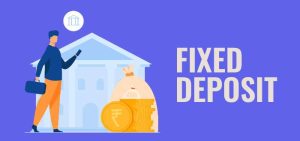Factors Affecting Fixed Deposit Interest Rates

For many years, those looking to invest in something that strikes a compromise between safety and rewards have turned to fixed deposits, or FDs. They provide a structured savings plan in which you make one large payment over a predetermined period of time and receive interest when the deposit matures.
On the other hand, FD interest rates fluctuate. They change as a result of a complicated interaction between market and economic forces. Investors must comprehend these elements in order to maximize their returns and make wise judgments.
Economic Indicators
- Inflation Rate: FD interest rates are directly impacted by inflation. In order to safeguard investor returns, high inflation frequently results in higher FD rates, whereas low inflation may have the opposite effect.
- Repo Rate: The interest rate at which the RBI loans to commercial banks determines foreign exchange rates. Lower FD rates are typically the result of declining repo rates and vice versa.
- Gross Domestic Product (GDP): Strong GDP growth is a sign of expanding economy, which frequently results in higher FD rates and more demand for credit. Conversely, lower FD rates could come from a slowing in GDP growth.
- Monetary Policy: The availability of funds for lending and, by extension, FD rates are impacted by the RBI’s monetary policy, which includes tools like CRR and SLR.
- Global Economic Conditions: Domestic interest rates, particularly FD rates, can be indirectly impacted by global variables such as oil prices, exchange rates, and geopolitical events.
Market Conditions
- Demand and Supply of Funds: FD rates are directly impacted by the interaction between the market’s supply of funds and credit demand. Banks often provide higher FD rates to entice deposits during periods of increased lending demand. In contrast, FD rates may decrease in an environment of low loan demand.
- Investor Sentiment: The amount of money that goes into fixed deposits is influenced by investor confidence and risk tolerance. Investors may favor the security of fixed deposits during times of economic uncertainty or market volatility, which could increase demand and possibly raise interest rates. On the other hand, bullish investor attitude may cause them to allocate money to different asset classes, which would result in lower FD rates.
- Bank Competition: An important factor in influencing FD rates is the level of competition among banks. In order to draw clients and keep deposits, banks frequently provide competitive interest rates.
- Government Policies: Bank lending rates and, subsequently, fixed deposit interest rates can be impacted by government policies such as tax reforms, interest rate controls, or financial inclusion programs. For example, tax advantages on interest income from fixed deposits may increase their appeal, and modifications to bank reserve requirements may affect the banks’ ability to lend money and, consequently, deposit rates.
Fixed Deposit-Specific Factors
- Tenure: The interest rate is highly influenced by the length of the fixed deposit. Since longer tenors have a longer lock-in period, they usually have higher interest rates. Nevertheless, before choosing a longer duration, take your liquidity demands into account.
- Deposit Amount: A few banks provide interest rates that are tier-based, meaning that larger deposits will earn higher rates. Those who have significant savings may find this advantageous.
- Interest Payout Frequency: The regularity of interest payments has an effect on your total returns. While liquidity is provided by more regular payouts, compound interest over an extended period of time can produce bigger profits.
- Benefits for Senior Citizens: A lot of institutions give senior citizens on fixed deposits better interest rates. This gives elderly investors even more motivation to buy FDs.
- Type of FD: Interest rates on various kinds of fixed deposits, such as cumulative and non-cumulative, may differ. When interest is reinvested, cumulative fixed-income investments often yield larger effective returns.
- Penalties for Premature Withdrawals: Know what happens if you break your fixed deposit before it matures. Your total returns may be impacted by these penalties.
Other Factors
The following other variables may also affect fixed deposit interest rates:
• Financial Health of the Bank: To entice deposits, banks that are financially sound and have a steady clientele may offer somewhat higher interest rates.
• Technological Advancements: Using technology to streamline banking processes can save costs, which could then be passed on to clients as higher interest rates.
• Customer Loyalty: Some banks reward their long-standing, devoted customers with lower interest rates.
• Seasonal Trends: Seasonal influences, such as the demand for cash during holiday seasons, can cause interest rates to change.
• Tax Implications: Fixed deposit tax advantages may have an indirect effect on interest rates by influencing investor preferences.
Conclusion
It is essential to comprehend the variables affecting fixed deposit (FD) interest rates in order to make wise investment choices. Even while FDs are a somewhat safe investment option, the interest rates they offer are variable and dependent on a number of market and economic factors. To optimize profits, it’s critical to often track changes in interest rates and evaluate products offered by various banks.






